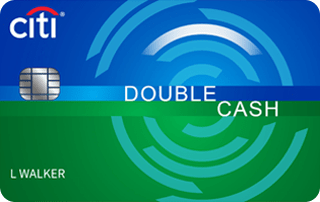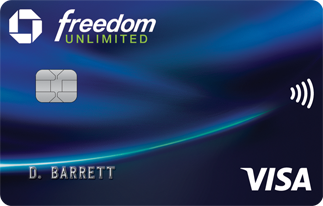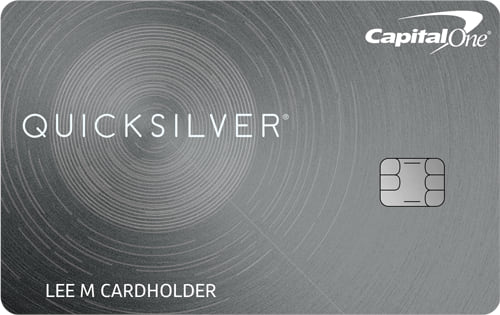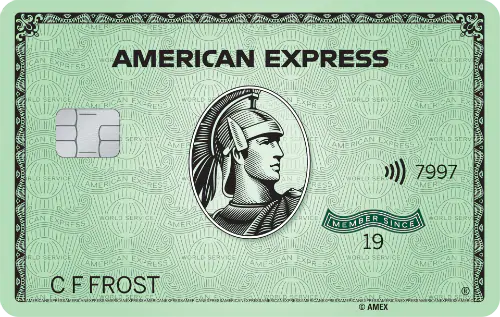The right combination of credit cards can provide lucrative benefits, or even pay for your next trip. Our focus here isn’t deep optimization of the points and miles game; there are plenty of websites out there that’ll help you there if that’s your goal. But we can still provide some advice on how to pick the best credit cards for you.
Summary
If you don’t want to read the entire article, here are our top-line recommendations:
- Our recommendation for frequent travelers: get “Chase Trifecta” of the Chase Sapphire Reserve, the Chase Freedom Unlimited, and the Chase Freedom. You’ll have to be ready for the Sapphire Reserve’s $550 annual fee, but its benefits over the Sapphire Preferred are worth it, especially if you spend a lot on travel and dining. It earns 3 points per dollar on travel and dining purchases. The Freedom earns 5 points on rotating quarterly categories, so use the Freedom for those. Then use the Freedom Unlimited for everything else, as it gets 1.5% back on all purchases. You can combine the points you earn from all three accounts into your Sapphire Reserve account, where you can transfer them to frequent traveler programs or redeem them in other ways.
- If you’re new to the points and miles game, get the Chase Sapphire Preferred and Chase Freedom Unlimited cards. The Sapphire Preferred carries a $95 annual fee, but earns 2 points per dollar on travel and dining expenses, and you can transfer points to frequent traveler programs including United, Southwest, Marriott, and Hyatt. Use the Freedom Unlimited to get 1.5 points per dollar on all other expenses, and combine your points.
- If you want the simplest option, get the Citi Double Cash card. Earn 2% on all your purchases, redeem for cash and statement credits, and don’t look back.
- If your travel is generally flexible and you’re willing to spend a lot of time maximizing your points redemption, consider the American Express Gold or Platinum cards. These cards earn points at different rates, but they both earn MembershipRewards that can be transferred to several valuable partners.
Which strategy is best for you?
When planning out the plastic (or, increasingly, metal) you’ll carry in your wallet, you need to choose among three primary types of credit cards:
- Cash-back cards earn a set amount of cash value for every dollar you spend
- Points-and-miles cards earn points that can be transferred to frequent traveler programs, or redeemed for cash value
- Co-branded cards earn benefits from a specific frequent traveler program
The best combination of cards is highly individual and depends heavily on your spending habits and goals. Cash-back cards are the simplest, both in terms of earning and using rewards. They provide a solid return, and you don’t have worry about choosing the right credit card for a purchase or how to optimize your redemption. Co-branded cards can provide good value if you’re devoted to a specific airline or hotel chain and want to maximize your points and perks. Points-and-miles cards provide more flexibility and can provide more lucrative returns than cash-back cards, but they require more effort—both when you spend and when you redeem—than other types of cards.
We think the points-and-miles strategy is probably the best option for most travel aficionados. You can get a variety of valuable benefits from these cards, and those benefits are even more lucrative if you travel a lot. But we’ll also discuss the cash-back options (if you want a simple approach) and the co-branded cards (for those who can get a lot of value from a single brand).
Cash-Back Cards
If you want the most straightforward option, go with a cash-back card.
Citi Double Cash (Mastercard, $0 annual fee)

The Citi Double Cash card earns 2% back on every purchase. So, for every dollar you spend, you get 2 cents back. That’s it. When you want to redeem your rewards, you can have Citi cut you a check, or you can apply your cash back to charges on your statement. There’s no annual fee (though Citi does charge foreign transaction fees). Honestly, it’s a solid strategy to get this card and get 2% back on all your purchases and not worry about any of the more complicated aspects of credit card rewards earning and burning.
Chase Freedom Unlimited (Visa, $0 annual fee)

The Chase Freedom Unlimited card earns 1.5% cash back on every purchase. So why would you want it over the Citi Double Cash? Well, Chase is currently offering a welcome bonus where they’ll double your rewards for your first year, on up to $20,000 in purchases. So you could consider using this card for the first year and then switching to the Double Cash. Chase lets you redeem for gift cards at a number of merchants (including Amazon, Starbucks, and Best Buy), a statement credit, or direct deposit into your bank account. There’s no annual fee, but note that Chase does charge a foreign transaction fee on this card; if you’re doing a lot of international travel, this might not be the card for you.
Capital One Quicksilver (Mastercard, $0 annual fee)

Like Chase’s Freedom Unlimited, the Capital One Quicksilver card offers 1.5% back on all purchases. Redemption options are similar; you can redeem your cash for an account credit, a check, or for specific purchases on your statement. At the moment, Capital One is offering a $150 cash bonus if you spend $500 within three months of opening your account. There’s no annual fee, and Capital One doesn’t charge foreign transaction fees. How to choose between the Chase Freedom Unlimited and Capital One Quicksilver? If you’re going to spend more than $15,000 on the card in your first year, go with the Freedom unlimited (Chase’s offer to double your bonus will be worth more than the $150 from Capital One). If you’re going to spend less than $15,000 or you’re planning a lot of international travel, pick the Quicksilver. Of the three no-fee cash-back cards we recommend here, the Quicksilver is the only one that doesn’t charge foreign transaction fees. If you travel a lot internationally, you’re probably better off exploring the points-and-miles options. But if you travel internationally every now and then and want a simple credit card strategy, the Quicksilver is a solid option.
Other Cash Back Cards
There are a number of other cash back cards out there that can be valuable on their own or in combination. None of these cards have annual fees. Some of these offer better deals than the flat-rate cash-back cards described above in certain spending categories, but not on general purchases. As a result, adding these cards to your wallet means that you’ll have to think about the best card to use for each purchase. We think that if you’re not looking for the simplicity of flat-rate card, you can get better value by exploring some of the points-and-miles options below. However, here’s a quick summary of some of the options in the cash-back space:
- Chase Freedom: Get 5% back on rotating quarterly categories (examples include gas stations, department stores, drug stores, and Amazon), and 1% back on everything else.
- Discover It: Get 5% back on rotating quarterly categories and 1% back on everything else.
- American Express Blue Cash: Earn 3% back at supermarkets, 2% from gas stations, and 1% for everything else.
- Wells Fargo Propel: Earn 3% back on restaurants, gas stations, travel, and streaming services. Get 1% back on everything else.
- U.S. Bank Cash Plus: Earn 5% cash back on categories of your choice, 2% back on gas stations, grocery stores, and restaurants, and 1% back on everything else.
Points-and-Miles Cards
Points-and-miles cards earn points that can be transferred to certain frequent traveler programs, redeemed for travel through the card issuer, or redeemed for cash or gift cards. This flexibility can provide significantly better value than cash-back cards, especially for frequent travelers. These cards also offer additional benefits, including lounge access and insurance, that travelers will find useful. The big players here are Chase, American Express, and Citibank. At Lost in the Right Direction, we lean towards Chase. But, like most decisions regarding credit cards, what’s best for you will depend on your specific travel and spending habits.
The major disadvantage of points-and-miles cards is that you have to invest some time deciding how best to use your points. It’s possible to find redemption options through transfer partners that offer incredible value, but those depend highly on availability. You can also book through your bank’s travel portal, but this has its own complications to consider (for example, hotels typically don’t offer loyalty points or elite status credit unless you book through them directly). If you’re not willing to spend some time comparing your redemption options, you might prefer the simplicity of a cash-back card.
Each bank offers at least two tiers of points-and-miles cards. The lower-fee card typically has an annual fee of around $95 (AmEx’s is more expensive), while the higher-fee cards carry fees ranging from $495 (Citi) to $550 (Chase and AmEx). In general, the higher-fee cards earn more points per dollar, offer perks like airport lounge access, and provide some sort of credit that effectively reduces the high annual fee. In general, if you’re new to the points-and-miles game, you might want to start with the lower-fee card to determine whether you actually get good value from the card. You can always upgrade later to the higher-fee card, and Chase and Citi are both currently offering better signup bonuses for their lower-fee cards. However, if you spend a lot on your credit cards, particularly on travel and dining, you’ll probably get better value from the higher-fee card.
You’ll also need to select among the banks that offer travel cards. It seems to be generally agreed among points-and-miles experts and credit card reviewers that Chase and AmEx offer better value than Citi. Whether you invest in Chase or AmEx may depend on their transfer partners; the big difference is that Chase allows you transfer points to United Airlines, Southwest Airlines, and Hyatt; while AmEx allows you to transfer to Delta Airlines, Hawaiian Airlines, and Hilton. AmEx also offers occasional bonuses on transfers, while Chase’s rate is always 1:1. If you have flexibility regarding when and where you travel, and you love the idea of snapping up the best possible deal whenever it’s available, you’ll appreciate these opportunities. Additionally, if you spend a lot on airfare, AmEx’s better airfare bonus might outweigh its higher fees and less valuable travel credit. On the other hand, if you dine out a lot, Chase’s earning bonus for spending at restaurants might get you better value.
Chase Ultimate Rewards
Chase’s travel rewards program is called Ultimate Rewards. To earn Ultimate Rewards, you’ll need either the Sapphire Preferred (Visa, $95 annual fee) or Sapphire Reserve (Visa, $550). Neither card charges foreign transaction fees. Ultimate Rewards can be transferred to the following frequent traveler programs at a 1:1 ratio (1 Ultimate Rewards point = 1 mile or point at each travel partner):
- Aer Lingus AerClub
- British Airways Executive Club
- Emirates Skywards
- Flying Blue/Air France/KLM
- Iberia Plus
- JetBlue TrueBlue
- Singapore Airlines KrisFlyer
- Southwest Airlines Rapid Rewards
- United MileagePlus
- Virgin Atlantic Flying Club
- IHG Rewards Club
- Marriott Bonvoy
- World of Hyatt
Additionally, you can redeem points for travel through Chase’s travel portal for flights, hotels, car rentals, activities, vacation rentals, and cruises. If you have the Sapphire Preferred, you can redeem for 1.25 cents per point; the Sapphire Reserve nets 1.5 cents per point. This redemption option means you should never really use the cash or gift card options, as they’ll only get you one cent per point.
If you’re willing to spend some time optimizing your points redemption, we think point-and-miles cards are worth it. So should you go with the Preferred or Reserve? Generally, we think you should probably go with the Reserve. Here’s why.

The Sapphire Reserve’s $550 annual fee might sound tough to swallow, but the card offers a $300 annual travel credit. In other words, Chase will reimburse you for your first $300 in travel expenses (a generous category that includes airfare, hotels, vacation rentals, Uber/Lyft/taxis, public transportation, and more) each year. That effectively reduces the annual fee to $250, or $155 more than the Preferred.
The Sapphire Preferred and Sapphire Reserve also earn points at different rates. The Sapphire Preferred earns 2 points per dollar on travel (again, Chase’s travel category is especially generous) and dining, and 1 point on everything else. The Sapphire Reserve earns 3 points per dollar on travel and dining, and 1 point on everything else. That means that if you spend about $10,333 or more per year on travel and dining, you’re better off with the Sapphire Reserve (assuming you get at least 1.5 cents of value out of your Ultimate Rewards points, and it’s possible to get even more). And that’s before you account for the additional benefits the Reserve offers over the Preferred.
Both of Chase’s cards offer a number of additional benefits. The Sapphire Preferred and Reserve both offer rental car insurance, roadside assistance (though the Preferred carries a $60 charge per service call), trip cancellation insurance, trip delay insurance, baggage delay and lost luggage reimbursement, travel accident insurance, and purchase protection.
I didn’t really understand how valuable these benefits are until I needed them. When we went to Iceland, I rented a car using a Chase Sapphire card. One day while we were driving, an oncoming vehicle kicked up a rock that cracked our windshield. Our rental car company charged a flat rate of about $500 for damaged windshields. I paid the fee, then submitted some documentation to Chase. Within a few weeks, I got a check for the full amount of the damage fee.
The Sapphire Reserve also offers a few other benefits that the Sapphire Preferred doesn’t. One is that, every four years, Chase will reimburse you for up to $100 for Global Entry or TSA Pre✔ fees. Another is airport lounge access; the Sapphire Reserve includes a Priority Pass Select membership, which gets you access to numerous airport lounges throughout the world. And even in airports where there are no lounges, you can sometimes get credits for meals at airport restaurants (usually around $28 each for up to two people). Again, this isn’t necessarily a benefit you appreciate until you start using it. If you travel a lot, you inevitably end up spending money at airport restaurants. Access to lounges with free food (not to mention the restaurant credits) can save you a lot of money. Recently, Chase also added Lyft Pink and Doordash Dashpass memberships as perks for the Reserve. Both can be quite valuable if you use those services.
If you decide to invest in Chase’s Ultimate Rewards, you should optimize your value by adding some Chase no-fee cards. Specifically, we think you should also get the Freedom Unlimited and the Freedom. Use your Sapphire card for travel and dining (3x or 2x back), your Freedom card for its rotating quarterly bonus categories (5x back), and your Freedom Unlimited card for everything else (1.5x back). Then combine your points through Chase’s online portal (it’s easy). Assuming your worst redemption option gets you 1.5 cents per point (through Chase’s travel portal), you’re earning at least 2.25 cents per dollar (1.5 x 1.5) on every purchase.
The bottom line is that we think the best credit card combination for frequent travelers is the Chase Sapphire Reserve, Freedom Unlimited, and Freedom. Note, however, that the Sapphire Preferred is currently offering a better sign-up bonus (60,000 Ultimate Rewards points) than the Reserve (50,000 Ultimate Rewards points). So you may want to consider applying for the Preferred, waiting until you get your signup bonus, and then upgrading to the Reserve (you can’t have both at the same time).
American Express MembershipRewards
American Express offers its own points-and-miles benefits, called MembershipRewards. Like Chase’s Ultimate Rewards, MembershipRewards can be transferred to a number of frequent traveler programs:
- Aer Lingus AerClub
- AeroMexico Club Premier
- Air Canada Aeroplan
- Flying Blue/Air France/KLM
- Alitalia Millemiglia
- ANA Mileage Club
- Cathay Pacific Asia Miles
- Avianca LifeMiles
- British Airways Executive Club
- Delta Skymiles
- El Al Matmid
- Emirates Skywards
- Etihad Guest Miles
- Hawaiian Airlines HawaiianMiles
- Iberia Plus
- JetBlue TrueBlue
- Qantas Loyalty
- Singapore Airlines KrisFlyer
- Virgin Atlantic Flying Club
- Choice Privileges
- Hilton Honors
- Marriott Bonvoy
AmEx typically offers transfers to these partners at varying ratios, many of which you can find here. These transfers usually max out at 1:1 (except for Marriott, where 5 MR = 6 Marriott Bonvoy points), though some partners offer less valuable transfers (for example, 1,000 MR = 750 Delta SkyMiles). However, AmEx regularly offers bonuses of between 10 and 20% to improve the value of these transfers. This makes using your points even more complex; not only do you have to find good value for your points with specific transfer partners, but you should look for those deals (which are often time-sensitive) when a transfer bonus with those specific partners is available.
AmEx offers three main points-and-miles cards: the AmEx Green, AmEx Gold, and AmEx Platinum. Like their Chase counterparts, the AmEx Green, Gold, and Platinum charge different fees, offer different bonuses, and offer different earning rates:
| AmEx Green | AmEx Gold | AmEx Platinum | |
| Annual Fee | $150 | $250 | $550 |
| Sign-up Bonus | 30,000 points | 35,000 points | 65,000 points |
| Earning Points | 3x on travel and restaurants | 4x on dining, 4x on supermarkets, 3x on airfare | 5x on airfare, 5x on prepaid hotels through AmEx |
| Airline Fee Credit | None | $100 | $200 |
| Airport Security | $100 annual CLEAR credit | None | $100 every four years |
| Foreign Transaction Fees | None | None | None |
| Hotel Elite Status | None | None | Marriott Bonvoy Gold Hilton Honors Gold |
| Uber Credits | None | None | $15/month + $20 in December |
| Lounge Access | $100 annual LoungeBuddy credit | None | Centurion, Delta Sky Club, Priority Pass Select, and more |
AmEx Green vs. Chase Sapphire Reserve

The AmEx Green is the most direct competitor to the Chase Sapphire Reserve. The Green’s $150 annual fee is $100 less than the Reserve’s $550 annual fee, minus the Reserve’s $300 annual travel credit. a win for AmEx. Like the Reserve, the Green offers 3x points on travel and restaurants (though these categories may not be quite as generous as Chase’s travel and dining categories).
Lounge access is an advantage for Chase here; Priority Pass provides free access to many lounges across the world, while LoungeBuddy permits you to pay for access to a smaller selection of lounges.
Airport security benefits also differ. Chase will reimburse you for Global Entry ($85) every four years. AmEx provides $100 towards a CLEAR membership. CLEAR is more exclusive than Pre✔, and will have shorter lines. It costs $179 per year, but the price is reduced to $119 if you a member of United or Delta Airlines’ frequent flier programs (both are free). So you’ll have to pay the $19 difference between the credit and the CLEAR fee, but AmEx’s benefit here is definitely more valuable.
Travel protections can sometimes be overlooked, but they’re often valuable. Chase provides best-in-class benefits, including: primary rental car insurance, baggage insurance, roadside assistance, trip cancellation and interruption insurance, trip delay insurance, travel accident insurance, emergency evacuation, and emergency medical & dental. The AmEx Green offers only secondary rental car insurance and baggage insurance.
AmEx Premium Cards
The AmEx Gold and Platinum cards offer an airline fee credit. However, this credit is much more limited than Chase’s travel credit. Chase’s travel credit will cover any travel expense, including airfare, hotels, rental cars, public transportation, and more. AmEx’s airline fee credit only covers things like checked bags, seat assignments, and lounge access. AmEx’s cards are also more expensive than Chase’s.
Like Chase, AmEx offers lounge access only if you get its premium credit card, the AmEx Platinum. AmEx’s lounge access is better than Chase’s; in addition to Priority Pass Select, you get access to AmEx’s classy Centurion lounges, Delta’s Sky Club, and the rest of the AmEx Global Lounge Collection.
AmEx vs. Chase
Whether to go with Chase or AmEx depends mostly on whether you prefer Chase or Amex’s transfer partners. At Lost in the Right Direction, we used to slightly prefer Chase’s travel credit cards over AmEx’s. This was due to the premier card’s lower annual fee, more generous travel credit, better travel benefits, and easier-to-use transfer partners. However, in January 2020, Chase raised the annual fee on the Sapphire Reserve from $450 to $550. With the extra $100 in fees, we now think the cards are close to a wash. The choice will largely depend on your ability to use your points with transfer partners.
- Transfer partners we use more (specifically United, Southwest, and Hyatt)
- Better travel credit
- Visa is accepted more widely than AmEx
- Ability to combine Ultimate Rewards from multiple cards to maximize point earning
- Better travel benefits
- Simple transfer ratios (always 1:1)
That said, here are some reasons you might want to go with the AmEx Platinum card over the Chase Sapphire Reserve:
- There’s a Centurion lounge at an airport you use a lot (DFW, HKG, IAH, PHX, MIA, LAS, LGA, SEA, SFO)
- You spend a lot on airfare
- You frequently use points or miles with one of MembershipRewards’s exclusive transfer partners (i.e. Delta, Hawaiian, Hilton, Etihad)
- You’re going to use the $200 in annual airline fee reimbursements
- You’ll use the Marriott or Hilton hotel status (and won’t gain it any other way)
- You have the flexibility to transfer points to partners when a bonus is available
Citi ThankYou
Citibank also has a travel rewards program, called ThankYou. Credit card reviewers seem to agree that Citi’s rewards program doesn’t compare well against AmEx or Chase, but we’ll include it here for completeness. One of the main reasons for this is that its transfer partners aren’t nearly as good; it doesn’t transfer to any major American airlines or to any hotels. ThankYou points can be transferred to the following airlines’ frequent flyer programs:
- Avianca LifeMiles
- Air France/KLM Flying Blue
- Cathay Pacific Asia Miles
- Etihad Guest
- EVA Air Infinity MileageLands
- Garuda Indonesia Miles
- Jet Airways JetPrivilege
- JetBlue TrueBlue
- Malaysia Enrich
- Qantas Frequent Flyer
- Qatar Privilege Club
- Singapore KrisFlyer
- Thai Royal Orchid Plus
- Turkish Airlines Miles & Smiles
- Virgin Atlantic Flying Club
Like Chase and AmEx, Citi offers more and less expensive versions of its travel cards. Citi calls them the Citi Premier and Citi Prestige; both are issued by Mastercard. Both cards allow you to transfer points at a 1:1 ratio to any of Citi’s travel partners. Also like AmEx and Chase, Citi has a travel portal where you can redeem your points for airfare or hotels. Oddly, Citi offers a 25% bonus for redeeming through its travel portal for the lower-fee Premier card, but no bonus for top-tier the Prestige. The table below breaks down the earnings and rewards offered by each of Citi’s ThankYou cards:
| Citi Premier | Citi Prestige | |
| Fee | $95 | $495 |
| Signup Bonus | 60,000 points | 50,000 points |
| Earning | 3 points per dollar on travel (including gas), 2 points on restaurants and entertainment, 1 elsewhere | 5 points per dollar on air travel and restaurants, 3 points on hotels and cruises, 1 point elsewhere |
| Additional Benefits | 25% redemption bonus through ThankYou Travel Center | Priority Pass Select Membership $250 travel credit Free 4th night at a hotel booked through ThankYou (twice per year) |
| Redemption | Citi ThankYou Travel Center (1.25x bonus) Transfer to partners | Citi ThankYou Travel Center (no bonus) Transfer to partners |
Travel Card Comparison
Ultimately, the value you get out of a travel card depends on your spending habits and how you use your rewards. Chase, AmEx, and Citi offer different earning rates and redemption options. The table below breaks down the fees, signup bonuses, and earning rates for each of the six major travel credit cards:
| Fee | Signup Bonus | Earning Rate | Credit | |
| Chase Sapphire Preferred | $95 | 60,000 UR | 2x on travel and dining, 1x elsewhere | $0 |
| Chase Sapphire Reserve | $550 | 50,000 UR | 3x on travel and dining, 1x elsewhere | $300 travel |
| AmEx Green | $150 | 30,000 MR | 3x on travel and dining, 1x elsewhere | $0 |
| AmEx Gold | $250 | 35,000 MR | 4x on restaurants and supermarkets, 3x on airfare, 1x elsewhere | $100 airline fee |
| AmEx Platinum | $550 | 65,000 MR | 5x on airfare, 1x elsewhere | $200 airline fee |
| Citi Premier | $95 | 60,000 TY | 3x on travel and gas, 2x on restaurants and entertainment, 1x elsewhere | $0 |
| Citi Prestige | $495 | 50,000 TY | 5x on air travel and restaurants, 3x on hotels and cruises, 1x elsewhere | $250 travel |
The table below breaks out airline travel partners by bank:
| Chase UR | AmEx MR | Citi TY | |
| Aer Lingus | ✔ | ✔ | ✖ |
| AeroMexico | ✖ | ✔ | ✖ |
| Air Canada | ✖ | ✔ | ✖ |
| Air France/KLM | ✔ | ✔ | ✔ |
| Alitalia | ✖ | ✔ | ✖ |
| ANA | ✖ | ✔ | ✖ |
| Avianca | ✖ | ✔ | ✔ |
| British Airways | ✔ | ✔ | ✖ |
| Cathay Pacific | ✖ | ✔ | ✔ |
| Delta | ✖ | ✔ | ✖ |
| El Al | ✖ | ✔ | ✖ |
| Emirates | ✔ | ✔ | ✖ |
| Etihad | ✖ | ✔ | ✔ |
| EVA | ✖ | ✖ | ✔ |
| Garuda Indonesia | ✖ | ✖ | ✔ |
| Hawaiian | ✖ | ✔ | ✖ |
| Iberia | ✔ | ✔ | ✖ |
| Jet Airways | ✖ | ✖ | ✔ |
| JetBlue | ✔ | ✔ | ✔ |
| Malaysia | ✖ | ✖ | ✔ |
| Qantas | ✖ | ✔ | ✔ |
| Qatar | ✖ | ✖ | ✔ |
| Singapore | ✔ | ✔ | ✔ |
| Southwest | ✔ | ✖ | ✖ |
| Thai | ✖ | ✖ | ✔ |
| Turkish | ✖ | ✖ | ✔ |
| United | ✔ | ✖ | ✖ |
| Virgin Atlantic | ✔ | ✔ | ✔ |
And hotel partners:
| Chase UR | AmEx MR | Citi TY | |
| Choice Privileges | ✖ | ✔ | ✖ |
| IHG Rewards Club | ✔ | ✖ | ✖ |
| Hilton Honors | ✖ | ✔ | ✖ |
| Marriott Bonvoy | ✔ | ✔ | ✖ |
| World of Hyatt | ✔ | ✖ | ✖ |
Co-Branded Cards
Co-branded credit cards offer benefits from a specific loyalty program. We think points-and-miles cards are usually a better value. However, co-branded cards can be beneficial if you use one airline or hotel chain a lot. For example, most airlines will waive checked bag fees for cardholders, and hotel chains will typically offer some level of elite status. We have a big post detailing some of the signup bonuses and major benefits for several airline and hotel credit cards. Unless you’re hugely devoted to one particular airline or hotel chain, a co-branded card shouldn’t be your primary credit card. However, if you fly with one airline a lot, or stay with one hotel brand frequently, you should assess whether the value you can get from a co-branded card outweighs the annual fee. If so, it might be worth it to add one (or a few) to your wallet.
Conclusion
The best credit card strategy depends on your spending patterns and how you plan to use your credit card rewards. If you want a simple approach and solid return, get the Citi Double Cash card, and don’t look back. If you’re new to the points-and-miles game, you should start with the Chase Sapphire Preferred, which you’ll use for travel and dining expenses, and the Chase Freedom Unlimited, which you’ll use for everything else. If you’re ready for a more advanced approach, and you’re willing to spend some time exploring the best ways to redeem your points, get the trifecta of the Chase Sapphire Reserve (for travel and dining), the Chase Freedom (for 5x back on rotating quarterly categories), and the Chase Freedom Unlimited (for 1.5x back on everything else). If you fly Delta a lot and/or you’re devoted to Hilton hotels, you spend a lot on airfare, and you frequently use airports with Centurion lounges, you might want to consider the AmEx Platinum card instead of Chase’s ecosystem.

Thanks for share this article it’s quite helpful to me.
Best regards,
Lunding Raahauge
Hi there to every , since I am genuinely keen of reading this website’s post to be updated daily.
It carries nice information.